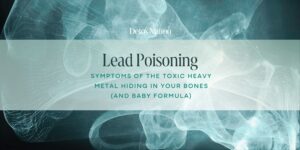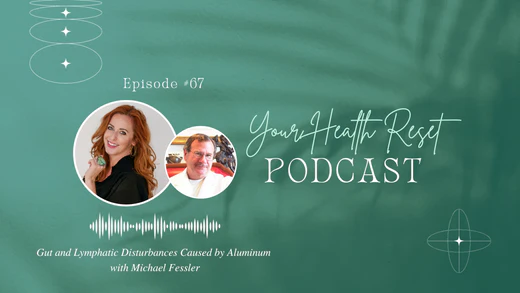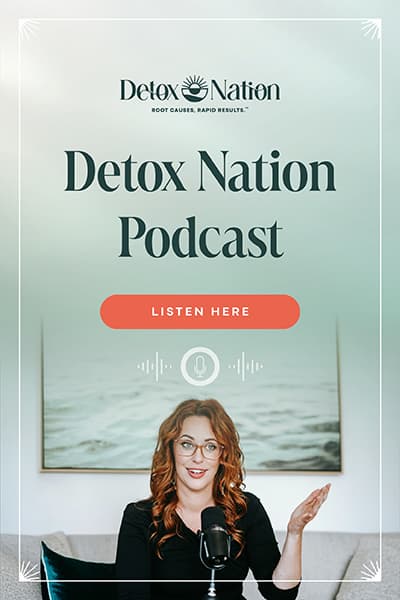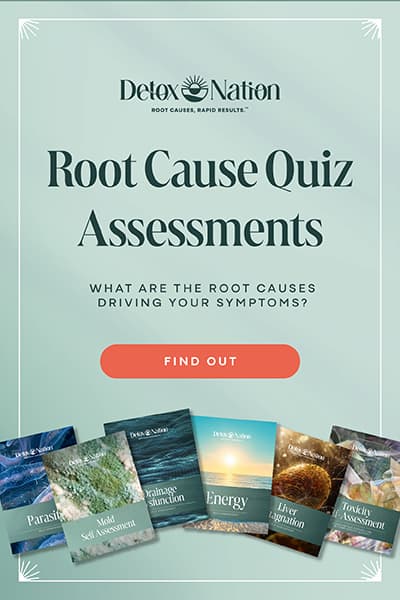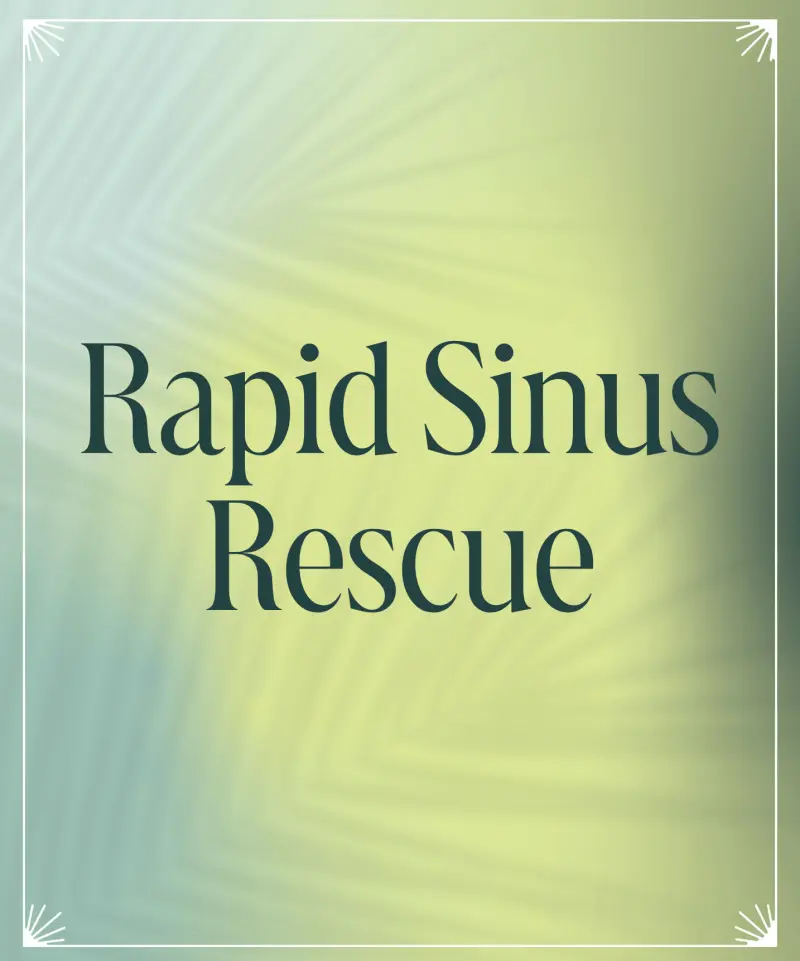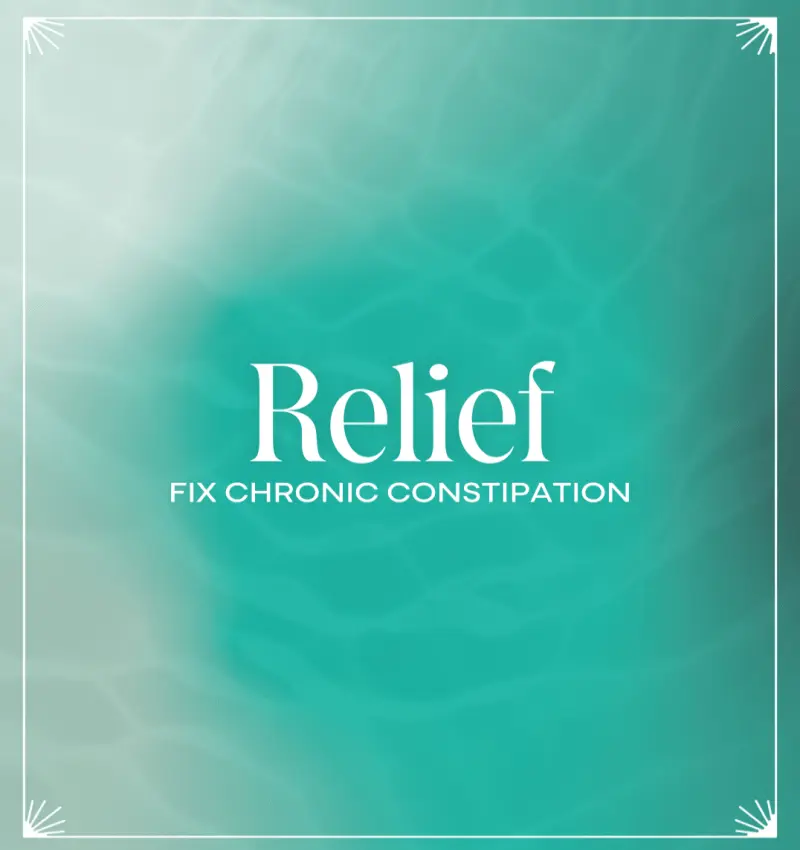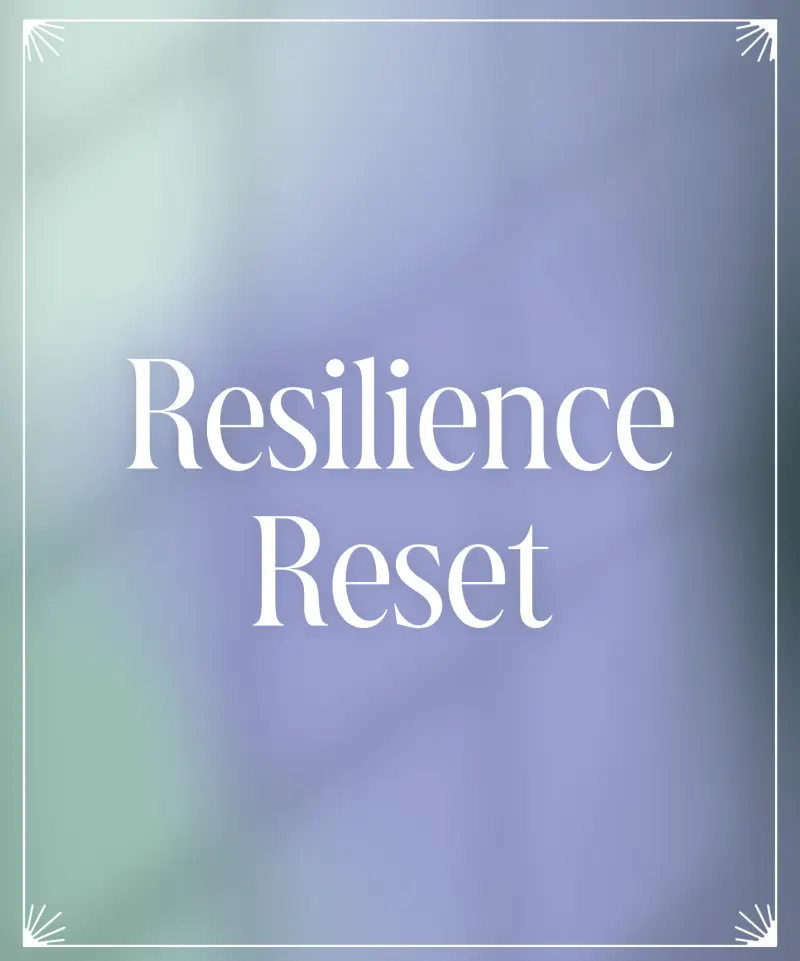Myalgic encephalomyelitis (aka Chronic Fatigue Syndrome or CFS) is more than fatigue—it’s your body stuck in survival mode. Your symptoms are clues to deeper issues like mitochondrial dysfunction, chronic infections, and toxins. Instead of pushing through, learn how to restore your energy at the source.
You know that feeling when you pull an all-nighter, fuel yourself with coffee, and crash hard the next day?
Now imagine that’s your baseline—every single day.
No relief, no “good night’s sleep” to reset you, no amount of rest that restores your energy.
That’s what living with Chronic Fatigue Syndrome (CFS) feels like.
This isn’t just “being tired.”
This is your body tapping out of the game because something much deeper is going wrong.
Your mitochondria (those little power plants inside your cells) aren’t making energy properly.
Your immune system is stuck in overdrive, but somehow still losing the battle.
And, just to keep things interesting, mainstream medicine still struggles to acknowledge how real and debilitating this condition is.
And yet, people love to dismiss it. “Oh, you’re just tired.” “Maybe you’re depressed?” “You should try jogging!”
If only it were that simple.
CFS isn’t about being a little tired—it’s a full-body malfunction.
Your muscles ache like you just ran a marathon (but you didn’t).
Your brain fog makes basic tasks feel like calculus.
And let’s not even talk about the post-exertional crash, where daring to exist beyond your usual limitations can leave you wiped out for days.
So, what’s really going on here?
And more importantly—how do you fix it?
The answer isn’t “push through” or “just rest.”
It’s about understanding the root causes that have hijacked your energy in the first place. And trust me, there’s more than one culprit.
Key Takeaways:
- Chronic Fatigue Syndrome (CFS) Is a Real, Physiological Condition—Not Just “Being Tired”
- Mainstream Medicine Often Misdiagnoses or Ignores the Root Causes
- Healing Requires Identifying and Removing Root Causes—Not Just Managing Symptoms. (But it’s totally possible!)

Common Symptoms: What Chronic Fatigue Syndrome Really Feels Like
You wake up already exhausted before your day even starts.
No matter how much you sleep, your body feels like it’s weighed down with bricks.
You drink coffee, but it barely makes a dent in your brain fog.
Every muscle aches, and even the simplest tasks leave you drained.
These are classic symptoms of myalgic encephalomyelitis/chronic fatigue syndrome (ME/CFS): brain fog, muscle pain, unrefreshing sleep, and post-exertional malaise (when even mild activity leads to a full-body crash).
It’s a real, physiological disorder—yet it’s often dismissed as stress, depression, or “just part of life.”
Chronic Fatigue by Any Other Name
Over the years, this entity has gone by numerous names in the literature, leading to confusion. (Because why wouldn’t we use six words to name something when two or three will do?)
Here are just a few:
- Chronic Fatigue Syndrome (3, 4, 5, 7, 9, 12, 15, 16, 17, 20)
- Myalgic Encephalitis (3, 4, 5, 7, 12, 17, 20, 21)
- Systemic Exertion Intolerance Disease (12)
- Chronic Fatigue and Immune Dysfunction Syndrome (19)
- Post-Viral Fatigue Syndrome (14, 21)
- Post-Infectious Disease Syndrome (21)
- Post-Active Phase of Infection Syndrome (7)
- Chronic Fatigue and Immune Deficiency Syndrome (7)
To further complicate the matter, in today’s insurance-driven system, doctors may not have the time to properly work-up a patient.
In the absence of a full understanding of the patient’s history and symptoms (and under the pressure to render a diagnosis and move on), providers may inaccurately diagnose the patient with CFS.
Worse still, there’s an appalling lack of awareness in mainstream medicine as to the variety of causes that can lead to CFS.
Seriously, if you never investigate the root causes, how can you effectively resolve it?
You can’t.
This keeps millions of Americans taking unnecessary medications (with significant side effects) in a hopeless state of chronic life-altering symptoms.
Guess what?
If you consider CFS to be a symptom of a larger issue instead of the end diagnosis; and if you pinpoint and resolve the underlying root cause, true healing can happen.
Before we get into the root causes – and to be thorough – let’s explore how mainstream medicine diagnoses CFS.

Signs and Symptoms: Diagnostic Criteria of Chronic Fatigue Syndrome
There’s no clinical biomarker of CFS, meaning you can’t just run a blood test or look at an x-ray (5, 7, 12, 13, 15).
CFS is considered a “diagnosis of exclusion,” meaning that providers rule out what they can (5, 9, 12).
When there’s nothing else to test (or they don’t have the time or resources to test further), they label the patient as having CFS.
In 1994, the CDC established the “Fukuda Criteria” for Chronic Fatigue (12, 16). The requirements are as follows:
- The patient’s primary symptoms have been evaluated and are unexplained.
- The primary complaints include the hallmark symptom of persistent or relapsing fatigue and have continued for a minimum of six months (1, 7, 8, 11, 14, 15, 16, 17, 18).
- The fatigue is disproportionate to activity and is unrelieved by rest.
- It results in significant impairment to activities and abilities.
- They must also have at least four of the following eight symptoms over the prior six months:
-
- Impaired short-term memory and/or concentration
- Sore throat
- Tender glands or lymph nodes
- Muscle pain
- Pain in multiple joints without redness or swelling
- Headache patterns, types, or severity that the patient hasn’t had previously
- Unrefreshing sleep
- Fatigue or “malaise” after exertion that lasts longer than 24 hours
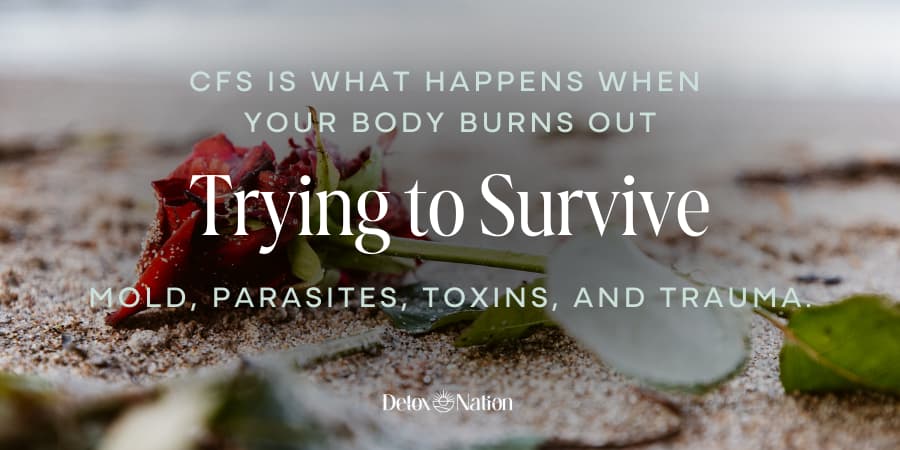
In 2015, the National Academy of Medicine proposed new criteria for the diagnosis of CFS (12):
- Substantial impairment in the ability to participate in pre-illness activity levels – work, school, personal, etc. that lasts for at least six months.
- New or recurring profound fatigue, especially after physical or mental activity, unrelieved by rest. This is called “Post-Exertional Malaise.”
- Unrefreshing sleep.
- Cognitive impairment and/or orthostatic intolerance.
- Symptoms must be classified as moderate, substantial, or severe and be present at least fifty percent of the time.
Either classification system paints a pretty grim picture.
And that’s not all.
There are countless additional symptoms linked to CFS. Here’s a breakdown.
Your Body’s Not Broken—It’s Calling for Help
Take our Energy Self-Assessment to uncover your biggest energy drains and start taking your power back.
Take The Energy AssesmentAdditional Symptoms of Chronic Fatigue Syndrome
Conventional medicine states the cause of CFS is unknown, but that it is likely multifactorial.
In my clinical experience, I’ve helped thousands of people reclaim their vibrant energy from the claws of CFS.
The underlying causes of their CFS have included mitochondrial dysfunction, infections (including parasites), mold toxicity, heavy metals, and toxic exposures. (More on each of these later!)
Depending upon the underlying cause, you may have additional symptoms. They can include:
- Altered energy metabolism (5)
- Altered microcirculation of the skin (12)
- Anhedonia (18)
- Anxiety (3, 16)
- Autonomic dysfunction – palpitations, dizziness, fainting, nausea, etc. (6, 11, 14, 18)
- Blunting of the HPA axis (12)
- Brain fog (3, 8, 14, 16)
- Cardiovascular problems (17, 18)
- Cell receptor abnormalities (12)
- Changes in brain structure (16)
- Cortisol level abnormalities (12)
- Cytokine dysregulation in the brain (15)
- Decrease in blood flow in the brain (16, 18)
- Decreased blood pressure with standing (12)
- Decreased motivation (8)
- Depression (3, 4, 5, 16)
- Disrupted temperature regulation (11, 12)
- Dysbiosis / Microbiome abnormalities (11, 14, 15, 17)
- Elevated Tumor Necrosis Factor Alpha (17)
- Endocrine disruption (8, 12)
- Fibromyalgia (3)
- High frequency of antibody titers to various pathogens (12)
- High lactic acid with exercise (3)
- Hyperactive sympathetic nervous system (12)
- Hypersensitivity to light or sound (18)
- IBS (3)
- Immune disruption (11, 14, 17, 18, 20)
- Impaired endothelial function (18)
- Increased serum CD40L found eight hours after activity – one study has found this can increase permeability of the blood-brain-barrier (10)
- Inflammation (4, 6, 14, 17, 18)
- Loss of balance (3)
- Low ATP (cellular energy) (3, 6, 14, 17, 18, 19)
- Natural Killer Cell dysfunction (12, 15)
- Neuroinflammation (4, 11, 13, 18)
- Oxidative stress / increased reactive oxygen species (free radicals) (3, 4, 17, 18)
- Reduced functional connectivity of brain neurons (13)
- Twitching (11)
In general, CFS is described as a complex, multi-organ system disease.
A “coordinated hypometabolic state.” (15)
The standard advice—just rest more, drink coffee, or exercise—often makes things worse.
When your body is struggling to produce energy, pushing it harder only deepens the fatigue.
The real solution?
Finding and fixing the root causes behind your energy crisis. (Yes, your CFS may be coming from more than one interwoven root cause.)
Let’s dig in!
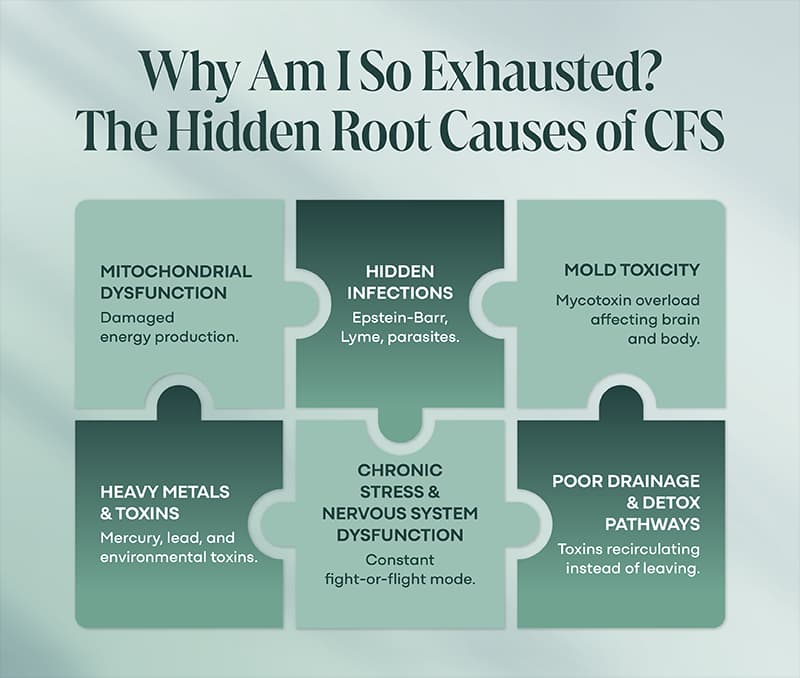
The Mitochondria Mystery: Why Your Cellular Batteries Are Fried
Your mitochondria are the tiny power plants inside every cell, producing the energy (ATP) that keeps you moving, thinking, and functioning.
But when mitochondria are damaged, your body goes into survival mode, rationing energy for only the most basic functions.
The result?
Fatigue, brain fog, and that frustrating “wired but tired” feeling.
Mitochondrial damage is often caused by heavy metals, infections, mold, and environmental toxins (4, 19).
These disrupt the mitochondria’s ability to generate energy, forcing your body to rely on emergency backup systems like stress hormones—which eventually burn out.
This is called Mitochondrial Dysfunction, and it impacts every part of your body.
The abnormal physical changes (such as oxidative stress, inflammation, etc.) seen in CFS have been found to be “strongly dependent” on mitochondrial dysfunction (4).
Lacking appropriate cellular energy, cellular metabolism slows.
Neighboring cells try to compensate, placing additional strain on their resources (19).
To be clear, if you have CFS, you likely have mitochondrial dysfunction (4, 6, 14, 18, 23).
To heal, you need to nourish your mitochondria.
Support them with nutrients like CoQ10, magnesium, and B vitamins—without overloading your system (because detoxing too fast can make symptoms worse).
You also need to remove the culprits that damaged your mitochondria in the first place.
One of these culprits is hidden infections.

The Hidden Infections Draining Your Energy
Chronic infections—like Lyme disease, Epstein-Barr virus (EBV), and mycoplasma—hijack your immune system and drain energy reserves (3, 12, 20).
Other infections that may be connected to CFS include (3, 12, 17, 18, 20):
- Human Cytomegalovirus
- Human Herpes Virus 6, 7, and 8
- Human Parvo virus B19
- Group B Coxsackie Virus
- Hepatitis C
- Influenza
- Ebola
- Enteroviruses (over 70!)
- Retroviruses
- COVID / SARS Coronavirus
- Bacterial infections (Lyme Disease, Q Fever, etc.)
- Parasitic infections
The immune system in CFS is out of balance: parts of it are overactive (causing inflammation and all those flu-like aches, swollen lymph nodes, etc.), while other parts are underactive or worn out (making it hard to fight real infections).
It’s the immune equivalent of being simultaneously amped up and exhausted.
Let’s take a closer look at two chronic immune assaults: Mold toxicity and parasitic infections.

Spotlight on Mold: The Ultimate Energy Vampire
If you’re living in a moldy home, your mitochondria and immune system are under constant attack.
Mold releases mycotoxins, which interfere with energy production, disrupt sleep, suppress your immune system, damage your gut, skew hormones, and inflame your brain (1, 3, 22).
Common symptoms of mold toxicity include chronic sinus issues, brain fog, headaches, gut issues, dizziness, sensitivity to smells, and extreme fatigue that won’t budge (1, 3, 22).
The kicker?
You might not even see the mold—it hides behind walls, in HVAC systems, and under floors.
Even worse, mold can colonize in your body (looking at you, sinuses) within 24 hours! They set up camp, develop biofilms to hide them from your immune system, and erode your health from the inside-out.
Even when you leave the moldy environment, you’re now bringing your mold “besties” with you everywhere you go.
This creates a tremendous strain on your body’s resources, paving the way for CFS (9).
What about parasites?
Spotlight on Parasites: Yes, You Probably Have Them
Parasites aren’t just a third-world problem.
They’re everywhere—picked up from contaminated food, water, and even pets.
And guess what?
They thrive in toxic, sluggish bodies.
Symptoms include bloating, brain fog, food sensitivities, and—yep—chronic fatigue (10, 21).
Parasites cause inflammation, suppress your immune system, hoard minerals (like iron and magnesium) and dump their own waste into your system, overwhelming your detox pathways.
And this causes more inflammation.
See the pattern?
Hidden infections—whether viral, bacterial, parasitic, or fungal—force your body into a constant state of low-grade inflammation and immune suppression, which diverts energy from daily activities to fighting off invaders (17).
And what about stress?

Chronic Stress and CFS
Your body can’t fight infections effectively if it’s stuck in fight-or-flight mode.
Normally, short-term stress can boost certain immune responses (ever noticed you don’t catch a cold in the middle of a crisis, but you do afterward?).
Chronic stress is a whole different story: it can lead to chronic inflammation and a sort of burned-out, dysfunctional immune state simultaneously.
Chronic stress keeps your nervous system in survival mode, blocking detox and repair.
We call this Nervous System Dysregulation.
In CFS patients, the stress hormone system (HPA Axis) often looks distinctly off-kilter (12).
Many studies (yes, scientists have been poking at this since the 1990s) report mild hypocortisolism (slightly low cortisol levels overall) with a flattened day-night cortisol cycle and a sluggish or blunted stress response (12, 24).
In plain English, the adrenal “gas pedal” is not as responsive – it’s like the body’s stuck in first gear and can’t rev up cortisol appropriately (12).
Interestingly, this hypocortisolism might worsen symptoms: normally, cortisol has anti-inflammatory effects, so if it’s abnormally low, the immune system can get more rowdy with less provocation.
In other words, a blunted HPA axis means minor stressors could trigger outsized inflammatory responses because the usual cortisol “brakes” aren’t working well.
As you’re realizing by now, many of these root causes are interwoven, meaning you have more than one of them occurring at the same time.
Another heavy hitter? Toxins.

The Toxin Load: Chemicals, Heavy Metals, and Energy Drain
We live in a world of 80,000+ unregulated chemicals.
They’re in our food, air, water, and everyday products.
Heavy metals like lead, mercury, and aluminum block mitochondrial function, disrupting energy production at the source.
Heavy metals and industrial toxins suppress your immune system.
These toxins also interfere with your hormones and sleep, making fatigue even worse—and causing CFS (3, 5, 17, 20).
Why “Just Detox” Isn’t the Answer (If Your Drainage is Stuck)
Many people make the mistake of jumping into hardcore detox protocols—only to feel even worse.
Why?
Because if your liver, kidneys, lymph, and gut aren’t draining properly, toxins just get reabsorbed.
This is called retoxification.
(Doing the right thing in the wrong order can result in unexpected complications.)
If you have CFS, even a small stimulus can cause disproportionate results.
Think of it this way: Your body has been under a combined attack from infections, mold, parasites, metals, chemicals, stress, and more for years or maybe decades.
In its overworked and exhausted state, it can’t tell the difference between a well-intentioned intervention and a hostile one, so it overreacts to seemingly Every. Little. Thing.

Rebuilding Your Energy: A Step-by-Step Roadmap
There’s no magic pill, but there is a process to regain your energy:
- Step 1: Reset your nervous system—healing happens in rest and repair mode.
- Step 2: Nourish mitochondria with the right nutrients and lifestyle changes.
- Step 3: Open drainage pathways so toxins can leave.
- Step 4: Identify and address root causes (infections, mold, parasites) in the proper order.
- Step 5: Maintain energy long-term without relying on stimulants.
Your Energy is Worth Fighting For
Here’s the thing: your body has been hijacked—by infections, toxins, stress, and dysfunctional energy production. (It’s not your fault and you’re not alone!)
CFS isn’t your body giving up on you.
It’s your body screaming, “HELP,” while mainstream medicine hands you a bottle of antidepressants and a pat on the head.
But you don’t have to accept this as your new normal.
Take our Energy Self-Assessment to identify your biggest energy drains.
Because the answer isn’t found in another round of trial-and-error medications or “pushing through” the exhaustion.
The answer is figuring out why your energy systems crashed in the first place and systematically addressing the root causes.
That means healing your mitochondria, clearing out hidden infections, getting rid of toxic overload, and restoring your body’s ability to function properly.
It won’t be instant, and no one can do it for you.
But if you start peeling back the layers, you can get your energy—and your life—back.
Your Body’s Not Broken—It’s Calling for Help
Take our Energy Self-Assessment to uncover your biggest energy drains and start taking your power back.
Take The Energy AssesmentFAQs
1. What is Chronic Fatigue Syndrome (ME-CFS), and how is it different from just being tired?
ME-CFS is a debilitating condition characterized by extreme fatigue that doesn’t improve with rest, along with symptoms of CFS like brain fog, muscle pain, and post-exertional crashes. (Symptoms get worse after mental or physical activity.) Unlike regular tiredness, ME-CFS is a multi-system disorder that affects energy production, immune function, and neurological health.
2. How is ME-CFS diagnosed if there’s no specific test for it?
ME-CFS is diagnosed as a condition of exclusion, meaning doctors rule out other possible causes first. Diagnostic criteria, like the Fukuda Criteria and the 2015 National Academy of Medicine guidelines, focus on persistent fatigue, post-exertional malaise, unrefreshing sleep, and cognitive impairment. There are a wide range of symptoms of myalgic encephalomyelitis and chronic fatigue syndrome. The symptoms may come and go, and there may be a worsening of symptoms after activity. Severe symptoms include severe fatigue that lasts for a lengthy time. Unfortunately, misdiagnosis is common due to a lack of mainstream medical awareness.
3. What are the root causes of ME-CFS?
MECFS isn’t a single disease but a symptom of deeper issues. Common underlying causes include mitochondrial dysfunction, chronic infections (like Epstein-Barr and Lyme), mold toxicity, heavy metal exposure, and chronic stress. Each of these factors can drain energy production and trigger widespread inflammation.
4. Can you recover from ME-CFS, or is it a lifelong condition?
Yes, recovery is possible—but it requires identifying and addressing the root causes. Healing involves supporting mitochondrial function, detoxing toxins (without overwhelming the body), rebalancing the immune system, and improving drainage pathways to eliminate infections and toxins.
5. Does exercise help or worsen ME-CFS?
For many people with ME-CFS, traditional exercise can make things worse due to post-exertional malaise (PEM)—where even mild activity leads to extreme exhaustion. Instead of pushing through, gentle movement like stretching, lymphatic support, and nervous system regulation can help the body recover without triggering a crash.
6. What role do toxins (like mold and heavy metals) play in ME-CFS?
Toxins disrupt mitochondrial energy production, immune function, and detox pathways, making it harder for the body to heal. Mold exposure, heavy metals (like mercury and lead), and environmental chemicals can overload the system, keeping people trapped in a low-energy, inflammatory state.




